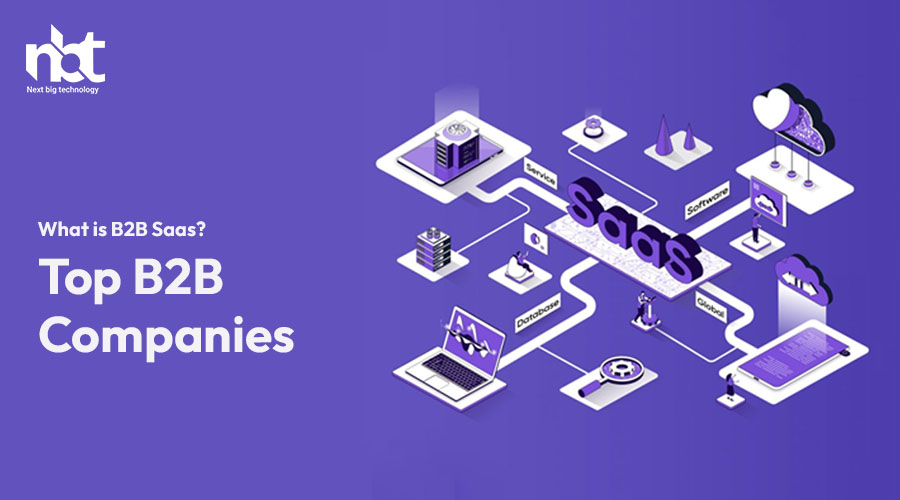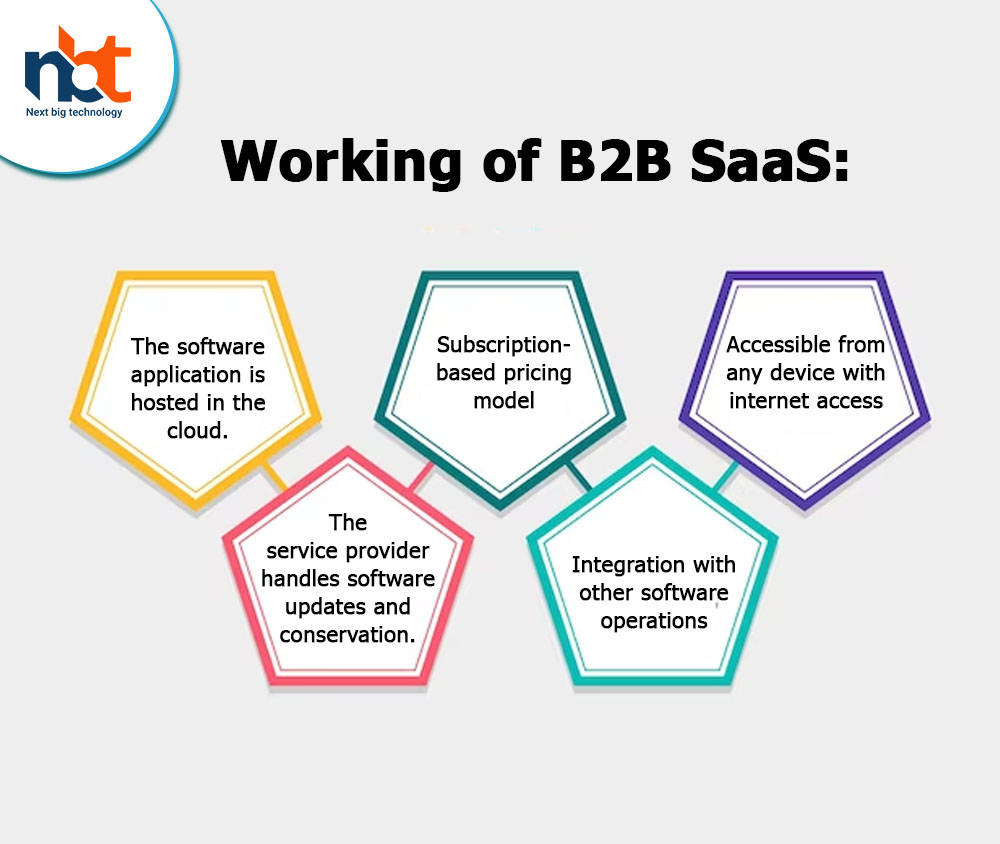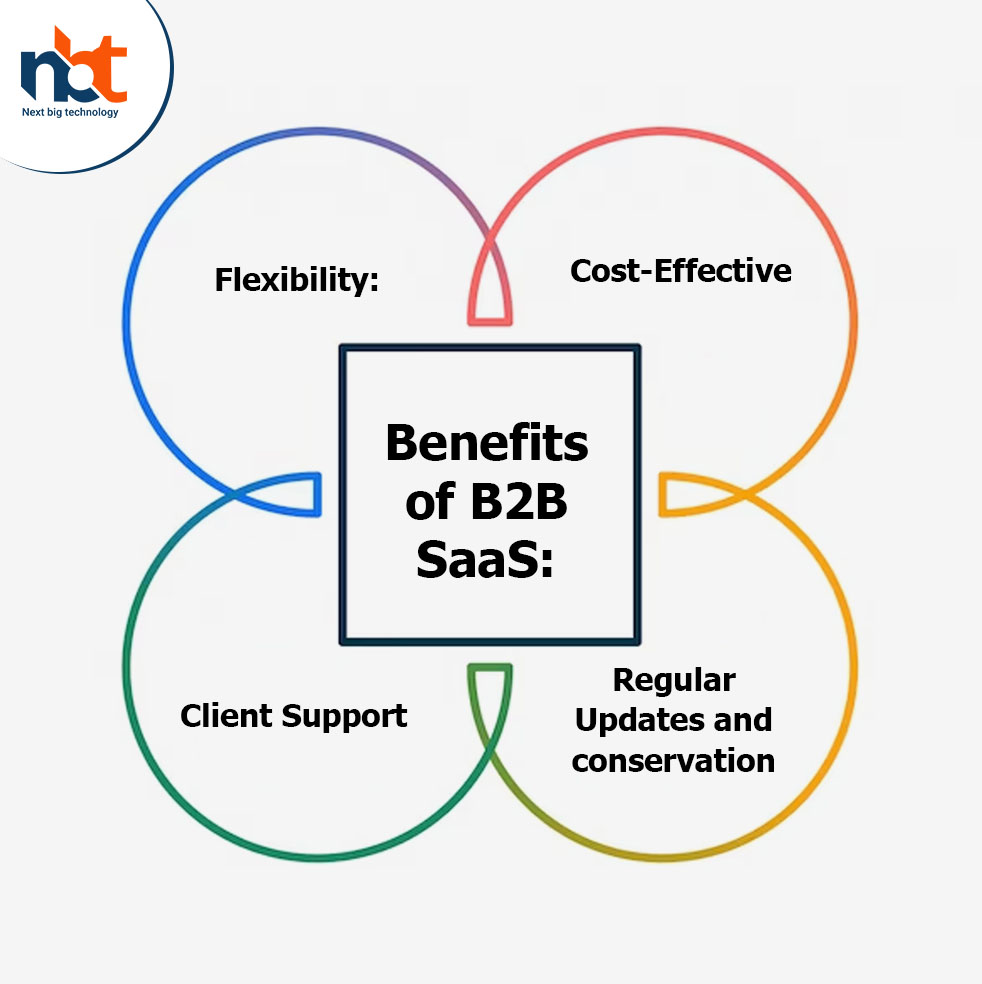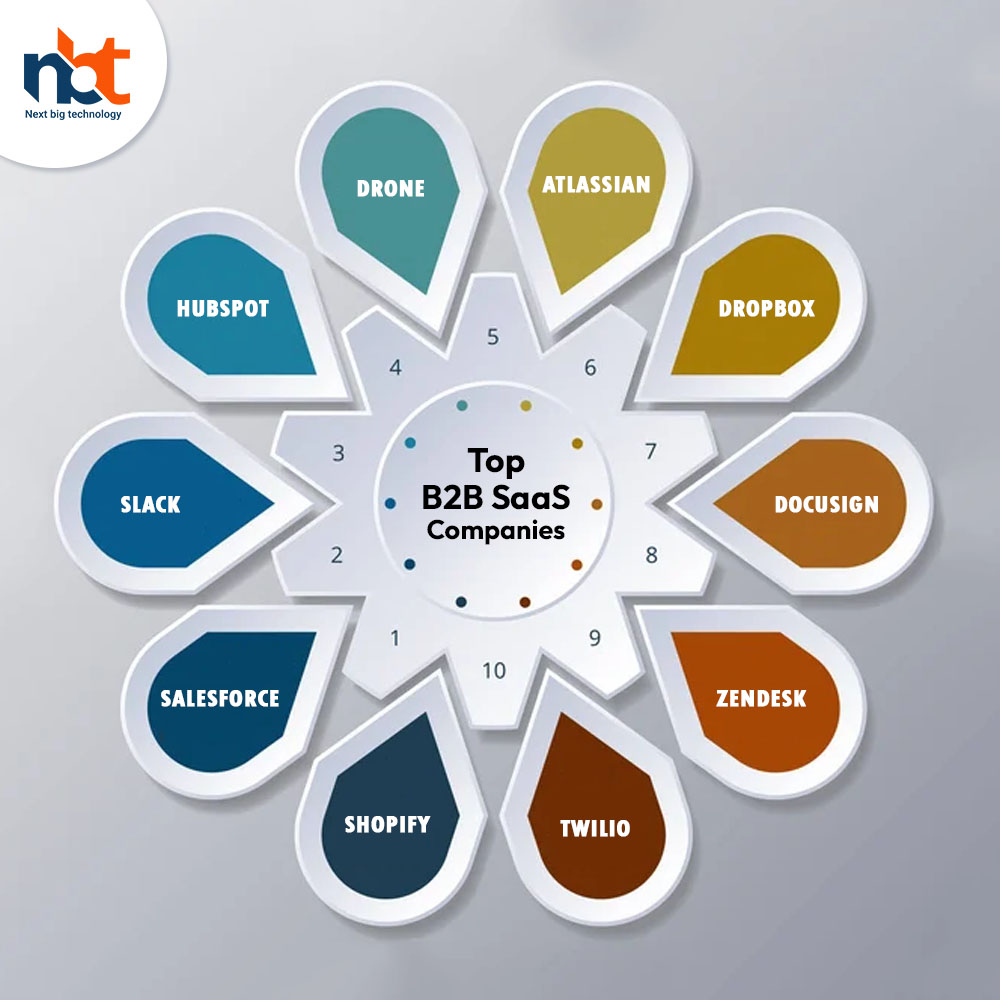Businesses of all sizes depend more on technology in the modern digital world to enhance operations and maintain competitiveness. Instead of spending a lot on expensive on-premise hardware or software installations, B2B SaaS has become a popular approach for organizations to acquire software applications through a subscription model. The definition of B2B SaaS, the advantages of using it, and the leading providers will all be covered in this article.
Table of Contents
What is B2B SaaS?
B2B SaaS pertains to cloud-based application software offered to organizations on a subscription-based model. As the program is housed in faraway locations and increases the supply online, organizations may access it from any place with a connection to the internet. Because of the subscription model, which frequently includes regular updates, servicing, and customer support, businesses can always utilize the most recent version of the program.
B2B Software systems are developed to help businesses automate and streamline their activities. These applications may include software for project management, marketing automation, bookkeeping, and many more. Software for customer relationship management (CRM) is one illustration.
Also Read : Development of a B2B Portal
Working of B2B SaaS:
Here are the key elements of how B2B SaaS works:
1. The software application is hosted in the cloud
With a B2B Software-as-a-Service approach, network management companies deliver software applications. Customers need not download or configure anything to use the Certificate Program on their computers, servers, or other devices. Network operators host their software in the cloud with a B2B Software-as-a-Service approach; network operating companies deliver software operations. Guests can download or configure something to use the Certificate Program on their computers, servers, or other biases. Network drivers host their software in the pall and make it fluently available to their guests. And make it easily available to their customers.
2. Subscription-based pricing model
Businesses Frequently pay a yearly or monthly charge to pierce B2B SaaS, which generally uses a subscription-grounded pricing model. Without spending a significant quantum of plutocrats up front on software licensing, this strategy enables associations to gauge their operation up or down as their requirements change.
3. Accessible from any device with internet access
The software program can be viewed from any device with internet connectivity since it’s housed in the pall. This covers laptops, tablets, desktop computers, and cell phones. This frees enterprises from being confined to a single place or object and enables them to operate ever or while on the go.
4. The service provider handles software updates and conservation.
Software upgrades and conservation are taken care of by the service provider in the B2B SaaS model. This implies that companies don’t have to worry about streamlining their software or resolving any arising technological enterprises. The service provider must always guarantee the software operation’s vacuity and smooth operation.
5. Integration with other software operations
B2B SaaS results are constantly made to interact with other types of software, including marketing robotization platforms, account software, and client relationship operation( CRM) systems. This integration enables enterprises to optimize their workflows and functional processes by linking numerous software programs.
The B2B SaaS model gives businesses an affordable and effective means to get the software programs they bear to run their enterprises. Businesses may save plutocrats and acclimate their use as demanded by subscribing to a service rather than buying software licenses. Also, B2B SaaS operations’ pall-grounded design enables enterprises to operate and pierce their software from any internet-connected device.
Benefits of B2B SaaS:
1. Flexibility:
Businesses have Further software operation freedom thanks to B2B SaaS. Businesses may gauge their use of software over or down as their requirements change using B2B SaaS. Also, businesses may use the program from any position with an internet connection, adding mobility and inflexibility.
2. Cost-Effective
Comparing B2B SaaS to conventional software results, the original cost is frequently lower. Companies subscribe to the software, which can help them manage their cash inflow and lower the fiscal threat of investing in new software. B2B SaaS doesn’t bear enterprises to engage in expensive on-premise tackle or software installations because it’s hosted on remote servers.
3. Regular Updates and conservation
Businesses are constantly using the most recent interpretation of the software thanks to the regular upgrades and conservation that B2B SaaS suppliers typically give. This may help associations maintain competitiveness and guarantee they exercise the most recent software results.
4. Client Support
B2B SaaS providers frequently offer client backing to prop businesses to resolve software-related problems. Businesses may save time and plutocrats by counting on the B2B SaaS provider to care for any technological enterprises, which can help them save coffers.
Also Read : How Can Mobile Apps Help B2B Businesses?
Top B2B Saas Companies
1. Salesforce
client relationship operation( CRM) software provider Salesforce offers several services to help associations manage customer relations and streamline deal procedures. San Francisco, California, serves as the company’s commercial headquarters. It was established in 1999.
Numerous capabilities are available with Salesforce, including occasion operation, lead shadowing, contact operation, and deals soothsaying. Also, it provides marketing robotization results for managing advertising, social media, and dispatch juggernauts. In addition, Salesforce offers results for client care and backing, including chatbots, knowledge operation, and cease operation.
As a result of the platform’s multi-tenant armature, all druggies have access to the same structure and coffers. This makes it possible for Salesforce to offer scalable and affordable results to companies of all sizes. The platform’s high rigidity enables enterprises to customize the software to meet their conditions.
2. Slack
Slack has been highly efficient for group communication and messaging since 2013, when it was launched in San Francisco, California.
You can avail of facilities like voice calling each other, video calling, and file sharing, and has shared facilities too on Google Drive, Salesforce, and Trello.
The software is meant to be extremely customizable, enabling companies to construct unique processes and use Slack’s API to automate operations.
The satiny and stoner-friendly Slack stoner interface has contributed to the platform’s rapid-fire relinquishment in enterprises of all sizes. These platforms are secure to use with the facility of two-factor authentication and encryption of data.
3. HubSpot
HubSpot is a platform for marketing and deals with robotization that provides tools to help companies draw in, keep, and delight consumers. Cambridge, Massachusetts, serves as the company’s commercial headquarters. It was established in 2006.
Inbound marketing, social media operation, client relationship operation, and deals robotization are among the services offered by HubSpot. The platform is intended to help enterprises develop and manage their deal processes and marketing juggernauts on a single platform. Also, it offers reporting and analytics tools to help companies assess the success of their marketing enterprise.
The modular armature of HubSpot’s platform enables companies to elect the precise tools and services they want. This aids companies in slicing charges and avoiding buying effects they do not need.
4. Drone
A drone is a platform for videotape conferencing that enables companies to host online conferences, webinars, and meetings. San Jose, California, serves as the company’s headquarters. It was established in 2011.
Screen sharing, recording, virtual backgrounds, and the capability to arrange and conduct meetings from any device are just many of the capabilities offered by Zoom. The platform’s stoner- benevolence and ease of use have contributed to its wide acceptance in companies of all sizes.
The pall-grounded armature used to produce zooms has guaranteed business scaling and great responsibilities.
5. Atlassian:
Atlassian software development business provides several tools to support platoon collaboration on systems. The business has its headquarters in Sydney, Australia, and was established in 2002.
Design operation, issue shadowing, law operation, and platoon collaboration are among the services offered by Atlassian. By offering a unified platform for design operation, law operation, and platoon collaboration, the platform is designed to help enterprises perfect their software development processes.
Due to the platform’s great degree of customization, enterprises may design unique workflows and use the API to automate processes. Also, the platform was developed using a pall-grounded armature, which enables great scalability and responsibility.
6. Dropbox:
Businesses may safely store and change information using Dropbox, a pall- grounded service for hosting and participating lines since 2007 when it started in San Francisco, California.
Train synchronization, collaboration capabilities, and connection with other programs like Microsoft Office, Google Docs, and Slack are just many of the services offered by Dropbox. The platform’s stoner- benevolence and ease of use have contributed to its wide acceptance in companies of all sizes.
The design of Dropbox’s platform is pall- ground, allowing for tremendous scalability and responsibility. The platform also offers strong security capabilities, including enterprise-grade compliance, two-factor authentication, and data encryption.
7. DocuSign:
Businesses may securely sign, distribute, and manage electronic documents using the electronic signature and document management platform DocuSign. The business was established in 2003, and its main office is in San Francisco, California.
DocuSign offers functions, including document routing, storage, and electronic signatures. The platform’s goal is to assist organizations in automating their document management procedures and reduce the time and expense of managing paper-based documents.
Due to DocuSign’s platform’s high adaptability, companies may design unique workflows and use its API to automate processes. Also, the platform was developed using a cloud-based architecture, which enables great scalability and dependability. The platform also offers strong security capabilities, including enterprise-grade compliance, multi-factor authentication, and data encryption.
8. Zendesk:
A platform for customer service and assistance called Zendesk aids firms in managing their client interactions. The business was established in 2007 and had its main office in San Francisco, California.
In addition to ticketing, chat, phone help, and self-service assistance, Zendesk also offers these functionalities. The platform is intended to assist companies in offering a smooth customer experience and raising customer satisfaction levels.
The highly flexible Zendesk platform enables companies to design unique workflows and automate processes using the Zendesk API. Also, the platform was developed using a cloud-based architecture, which enables great scalability and dependability. The platform offers comprehensive security capabilities, including user authentication, data encryption, and enterprise-level compliance.
9. Twilio:
With the help of the cloud communications platform Twilio, companies can create and implement communication tools, including phone and video calling, messaging, and authentication. The business was established in 2008, and its main office is in San Francisco, California.
Programmable phone, message, and video capabilities, as well as solutions for authentication and security, are all provided by Twilio. The platform is intended to assist businesses in developing communication solutions that are specifically tailored to their needs.
Due to Twilio’s platform’s great degree of customization, companies may design unique workflows and use Twilio’s API to automate processes. Also, the platform was developed using a cloud-based architecture, which enables great scalability and dependability. The platform also offers strong security capabilities, including enterprise-grade compliance, multi-factor authentication, and data encryption.
10. Shopify:
Businesses may develop and manage their online stores using the e-commerce platform Shopify. The business was established in 2004 and had its headquarters in Canada Ottawa.
Website design, product administration, payment processing, and shipment management are just a few of the tools that Shopify offers. The platform is intended to support businesses in selling their goods online and give customers a smooth purchasing experience.
Due to Shopify’s platform’s great degree of customization, companies may design unique workflows and use its API to automate processes. Also, the platform was developed using a cloud-based architecture, which enables great scalability and dependability. The platform offers comprehensive security capabilities, including user authentication, data encryption, and enterprise-level compliance.
Also Read : Latest B2B e-commerce trends in the current year
Conclusion:
A software distribution model called B2B SaaS gives companies an affordable and effective method to obtain the software tools they need to run their company. Businesses may save money and adjust their use as required by hosting software programs on the cloud and offering them as a service. Businesses may refrain from making substantial upfront expenditures in software licensing because of the subscription-based pricing structure of B2B SaaS, which also gives them greater control over how much they spend on software.
Thanks for reading our post “What is B2B SAAS? Top B2B Companies”. Please connect with us to know more about B2B SAAS platform.





















